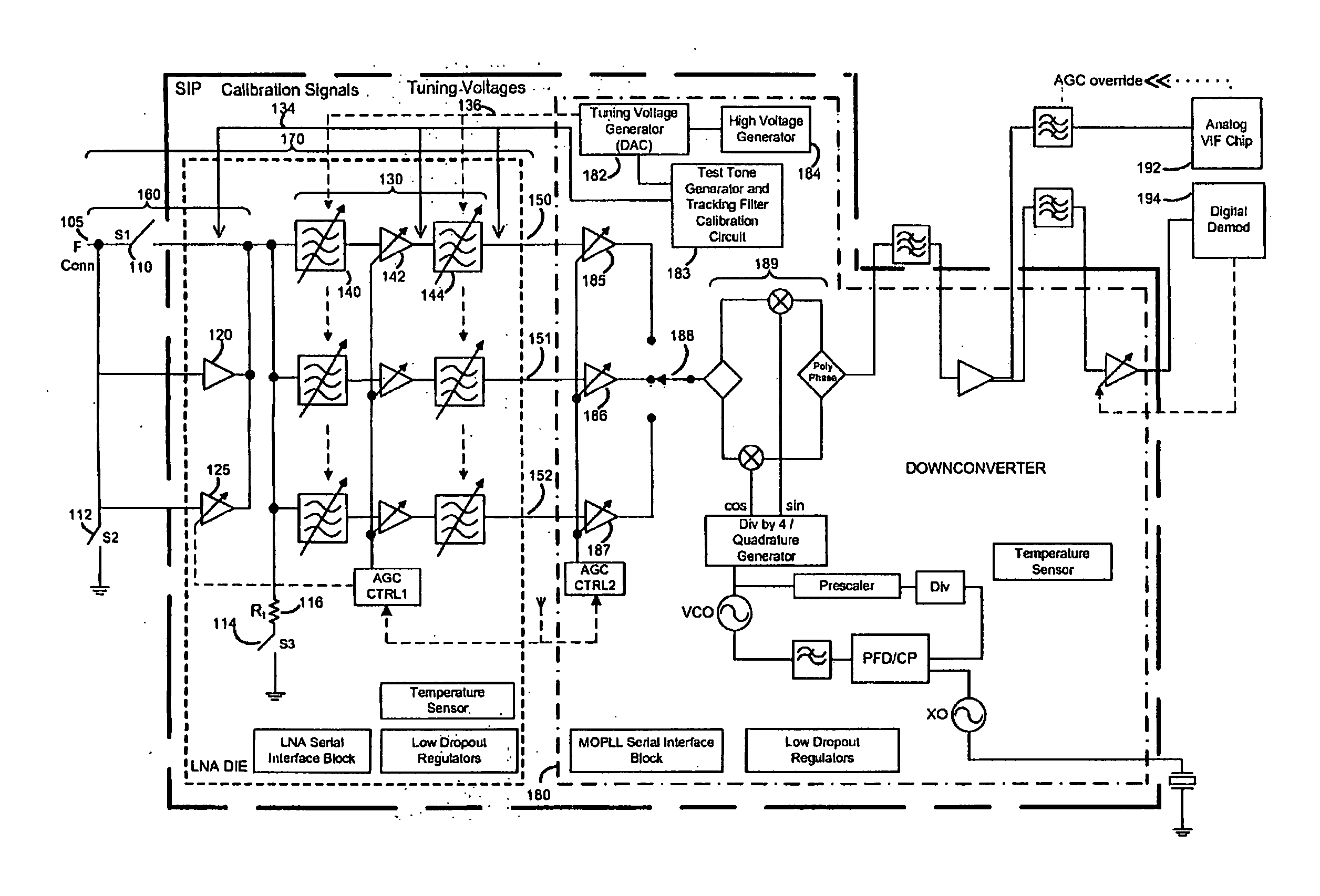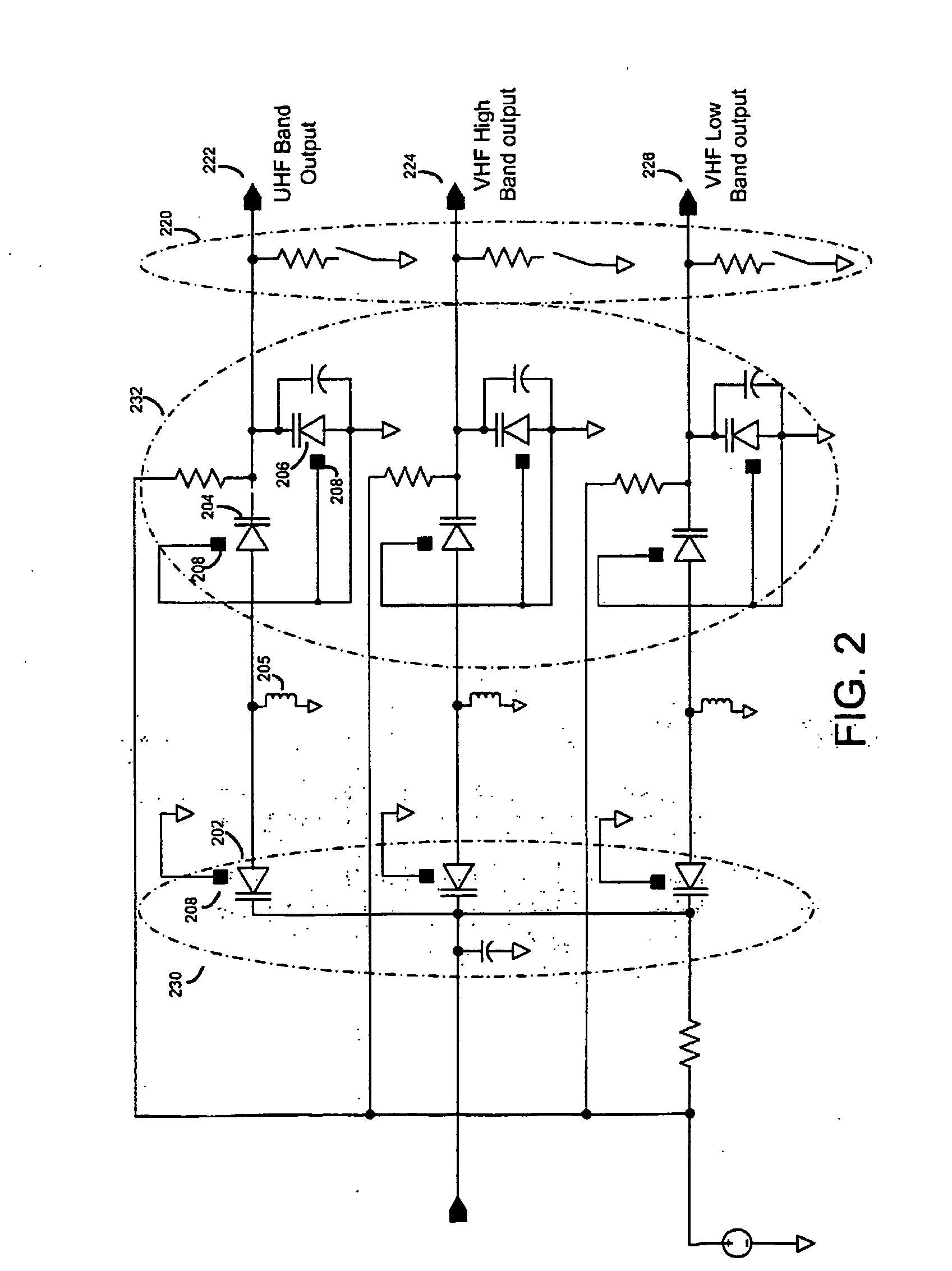Receiver with tuner front end using tracking filters and calibration
a technology of tracking filter and receiver, applied in the field of communication systems, can solve the problems of limited tuning range, increased cost and space usage, and inability to optimize the design of the receiver for cost and/or performance, and achieves the effect of improving the ease-of-use of the receiver, reducing the cost of the receiver, and improving the q
- Summary
- Abstract
- Description
- Claims
- Application Information
AI Technical Summary
Benefits of technology
Problems solved by technology
Method used
Image
Examples
Embodiment Construction
[0047]FIG. 1 shows an example of an implementation of a tuner front-end 170. The tuner front-end 170 includes multi-mode low noise amplifier 160 and tracking filter 130. Tracking filter 130 includes a first stage tracking filter 140, a Low Noise Amplifier (LNA) 142, followed by a second stage tracking filter 144 for desired selectivity. Although other filter line-up architectures known in the art are applicable, this example topology results in a lower noise figure (NF) by reducing the pass band losses with the first stage tracking filter 140 before the signal is amplified by the LNA 142. A single LC (inductor-capacitor) tank can be used in the first stage tracking filter 140 (i.e. one inductor and one or several capacitors). Because the LNA 142 receives a signal that has been band limited by the first stage tracking filter 140, the power handling requirement is reduced relative to a broader band LNA and therefore, the linearity is improved, resulting in less distortion. To further ...
PUM
 Login to View More
Login to View More Abstract
Description
Claims
Application Information
 Login to View More
Login to View More - R&D
- Intellectual Property
- Life Sciences
- Materials
- Tech Scout
- Unparalleled Data Quality
- Higher Quality Content
- 60% Fewer Hallucinations
Browse by: Latest US Patents, China's latest patents, Technical Efficacy Thesaurus, Application Domain, Technology Topic, Popular Technical Reports.
© 2025 PatSnap. All rights reserved.Legal|Privacy policy|Modern Slavery Act Transparency Statement|Sitemap|About US| Contact US: help@patsnap.com



